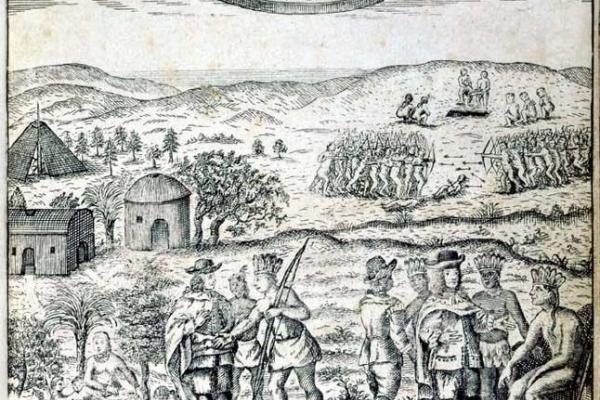Advanced Search

The Philadelphia deejay Bob Horn hosted Bandstand, which was broadcast regionally from Studio B at WFIL-TV from 1952 to 1956. Horn’s popular afternoon program for teenagers was the forerunner of Dick Clark’s American Bandstand.

In 1969, West Philadelphia High School’s enrollment was 99 percent African American, with some 3,800 students packed into a building whose capacity was 2,400. The high school’s principal, Walter Scott, saw the Free School as a means both to reduce overcrowding at WPHS and to outsource the main building’s disruptive students, especially its gang members.

Swedish traders encountered the Lenape in the 18th century, as did Dutch traders. Swedes gave the Lenape name Chinssessing (“a place where there is a meadow”) to a settlement they established on the west bank of the Schuylkill—today’s Kingsessing district.

Gray’s Ferry Bridge originated as a Revolutionary War pontoon bridge of great instability.

Eliza Willing Powel, wife of Samuel Powel and matriarch of the Powel family well into the 19th century, was a formidable woman of the politically charged late-18th century. She made her mark on the national stage during George Washington’s presidency (April 1789–March 1797), when Philadelphia was the working seat of the federal government and site of the president’s residence.
This 1796 map excerpt shows The Woodlands in relation to the Schuylkill River, Mill Creek, and Gray’s Ferry (the “Lower Ferry”).

Aerial view looking south, 1968, showing RDA Unit 3 demolition sites for the Science Center (along Market Street) & University City High School (bounded by the trapezoidal fence in foreground), with the University of Pennsylvania (background) south of Chestnut St. The building on the south side of Warren St. is the Drew Elementary School.

Novella Williams was the legendary president of the grassroots organization Citizens for Progress. In the scattered-site Free School’s first year of operation, Williams and her conservative allies on the school’s community board opposed the annexes’ free-wheeling progressive orientation and their idealistic White teachers. Demanding a traditional academic curriculum grounded in fixed rules and regulations, Williams and her allies forced the removal of Aase Eriksen as Free School director and her replacement with Ola Taylor, a traditional administrator.

Purchased in 1908 from the Dentzel Carousel Company of North Philadelphia, with 52 elegantly hand-carved animals and 1,296 lights, the carousel remained a beloved attraction at the park for the next 47 years. This photo shows the carousel in Lambertville, PA, in its pre-restoration condition in the years after the demolition of Woodside Park. The Smithsonian Institution meticulously restored the carousel, which happily found a permanent home in Philadelphia’s Please Touch Museum.

White children floating in a boat on a water ride in Woodside Park. We find no images of African American visitors in the historical collections. From its opening in 1926, four-acre Crystal Pool’s thinly veiled Whites-only membership policy and various subterfuges denied Blacks access to facilities that could accommodate 5,000 swimmers. Crystal Pool was integrated only after the City took control of its management in 1952.

A popular Woodside Park ride in the postwar era. The happy faces are White. Though legally the rides were open to all, Woodside Park was well-known for its notorious Jim Crow practices in places like the rollerdrome (picketing resulted in its closure) and the Crystal Pool, which was not integrated until 1952.
